Potrebujeme váš súhlas na využitie jednotlivých dát, aby sa vám okrem iného mohli ukazovať informácie týkajúce sa vašich záujmov. Súhlas udelíte kliknutím na tlačidlo „OK“.
ASTM D6395-11
Standard Test Method for Flatwise Flexural Impact Resistance of Rigid Plastics (Withdrawn 2019)
Automaticky preložený názov:
Štandardná skúšobná metóda pre naplocho v ohybe Odolnosť proti nárazu z tuhých plastov
NORMA vydaná dňa 1.4.2011
Informácie o norme:
Označenie normy: ASTM D6395-11
Poznámka: NEPLATNÁ
Dátum vydania normy: 1.4.2011
Kód tovaru: NS-34973
Počet strán: 6
Približná hmotnosť: 18 g (0.04 libier)
Krajina: Americká technická norma
Kategória: Technické normy ASTM
Kategórie - podobné normy:
Anotácia textu normy ASTM D6395-11 :
Keywords:
aging, exposure, flexural, impact, plastic molding, plastic sheets, weathering, Rigid plastics, Weathering (plastics), Flatwise flexural impact testing, Impact testing--plastics, Performance--plastics, Plastic molding materials, ICS Number Code 83.080.01 (Plastics in general)
Doplňujúce informácie
| Significance and Use | ||||||||||
|
The flatwise flexural impact test is a test in which the kinetic energy lost by a moving pendulum during impact is used to determine the energy to break or deform a test specimen. The standard Izod test apparatus as described in Test Method D256 is retrofitted with clamping jaws, which hold the test specimen such that the flat face of the specimen is struck by the pendulum during a test. The pendulum shall be a standard Izod pendulum as described in Test Method D256. It shall be capable of delivering an energy of 2.71 ± 0.14 J (2.00 ± 0.10 ft.-lbf). Except as detailed in 10.5, this basic pendulum shall be used with all specimens that extract less than 85 % of the available energy. Higher energy pendulums or a basic pendulum to which weights are added to increase its available energy shall be used with specimens that require more energy to break. A series of energy levels such that each has twice the energy of the next lighter one will be found convenient. The striking nose of the pendulum shall contact one of the flat faces of the specimen at a specified distance above the clamp edge. The ratio of the distance between the top of the clamp and the centerline of the rounded striking edge to the specimen thickness shall be 2.5 ± 0.1. The type of failure of each specimen tested shall be assigned one of the following categories: Complete Break (C) A break in which the specimen is separated into two or more pieces. Hinge Break (H)A nearly complete break in which there is little or no spring back when the free end is bent or displaced. Partial Break (P)An incomplete break in which fracture extends through at least 50 % of the specimen thickness, and such that the free end can be bent with relatively little effort yet has considerable spring back. Nonbreak (N)A result where there is no fracture or the fracture extends less than 50 % of the specimen thickness. The value of this impact test is to determine the change in impact properties that may result from a material having been exposed to one or a series of environments, such as weathering at different intervals or different intensities when these data are compared to a file sample exposed only to the standard laboratory environment or other agreed upon conditions. The flatwise impact resistance is calculated as energy absorbed per unit of cross-sectional area. Before proceeding with this test method, reference should be made to the specification of the material being tested. Any test specimen preparation, conditioning, dimensions, and/or testing parameters covered in the material specification shall take precedence over those mentioned in this test method except in cases where to do so would conflict with the purpose for conducting testing. If there are no material specifications, then the default conditions apply. |
||||||||||
| 1. Scope | ||||||||||
|
1.1 The resistance of plastics to breakage by flexural shock may be determined by test methods such as those contained in Test Method D256. Specimens used in those test methods feature a milled notch to promote brittle fracture. The test specimens are struck by a pendulum with the depth dimension parallel to the direction of pendulum swing. This test method is differentiated from the others by its application to the assessment of the affect on impact resistance of changes in the surface of specimens resulting from weathering or other exposure. In this test method, specimens are struck by a pendulum with the depth dimension perpendicular to the direction of pendulum swing. Test Method D5420 may also be used to conduct testing of weathered or exposed specimens. This test method is differentiated from Gardner Impact by the smaller size of the specimens, which may result in substantially higher productivity of accelerated weathering instruments. Additionally, this test method provides multiple data from a single specimen for characterization of within specimen variability. 1.2 This test method describes the determination of the resistance of rigid plastic strip specimens to breakage or permanent deformation when one end of the specimen is subjected to an impact upon its wide face while the other end of the specimen is firmly clamped. 1.3 This test method is applicable to specimens of 1.60 mm (0.0625 in.) thickness. However, the limits of applicability of the test are not sharply defined, and specimens having other dimensions may frequently be used. For specimens of thicknesses other than 1.60 mm (0.0625 in.) the ratio of the distance between the top of the clamp and the centerline of the rounded striking edge to the specimen thickness must be 2.5 ± 0.1. 1.4 This test method measures the relative impact resistance of samples having approximately the same thickness. Normalization of the impact resistance to unit cross-sectional area only partly compensates for the effects of specimen thickness variation because, at the fixed cantilever length, the ratio of shear stress to tensile stress in bending increases with thickness, and the importance of these effects in contributing to the energy absorbed is greater for ductile than for brittle failure. 1.5 This test method is used primarily as a means of assessing, for a series of samples, changes relative to a control due to some treatment such as weathering or exposure to active environments. It has been particularly useful as a sensitive indicator of the development of surface cracks or a brittle surface. The existence or formation of cracks in an inherently brittle surface produces marked lowering of impact strength when that surface is the one subjected to tension in the test. 1.6 This test method is not generally applicable to materials such as elastomers or nonrigid plastics in which there is no fracture, permanent deformation, or other change due to yielding in flexure. However, it may be desirable to test such materials as file samples to establish reference points when the test is applied as described in 1.5. 1.7 The values stated in SI units are to be regarded as the standard. The values given in parentheses are for information only. 1.8 This standard does not purport to address all of the safety concerns, if any, associated with its use. It is the responsibility of the user of this standard to establish appropriate safety and health practices and determine the applicability of regulatory limitations prior to use. Note 1—There is no known ISO equivalent to this standard. |
||||||||||
| 2. Referenced Documents | ||||||||||
|
Podobné normy:
Historická
15.11.2012
Historická
1.4.2010
Historická
1.9.2013
Historická
1.11.2010
Historická
1.6.2013
Historická
15.7.2013


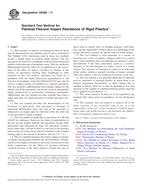
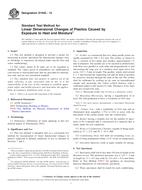 ASTM D1042-12
ASTM D1042-12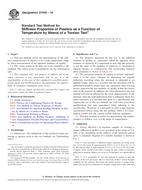 ASTM D1043-10
ASTM D1043-10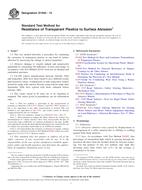 ASTM D1044-13
ASTM D1044-13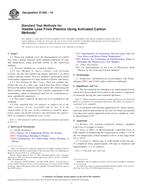 ASTM D1203-10
ASTM D1203-10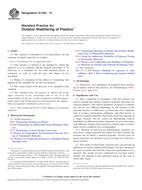 ASTM D1435-13
ASTM D1435-13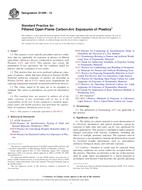 ASTM D1499-13
ASTM D1499-13
 Cookies
Cookies
